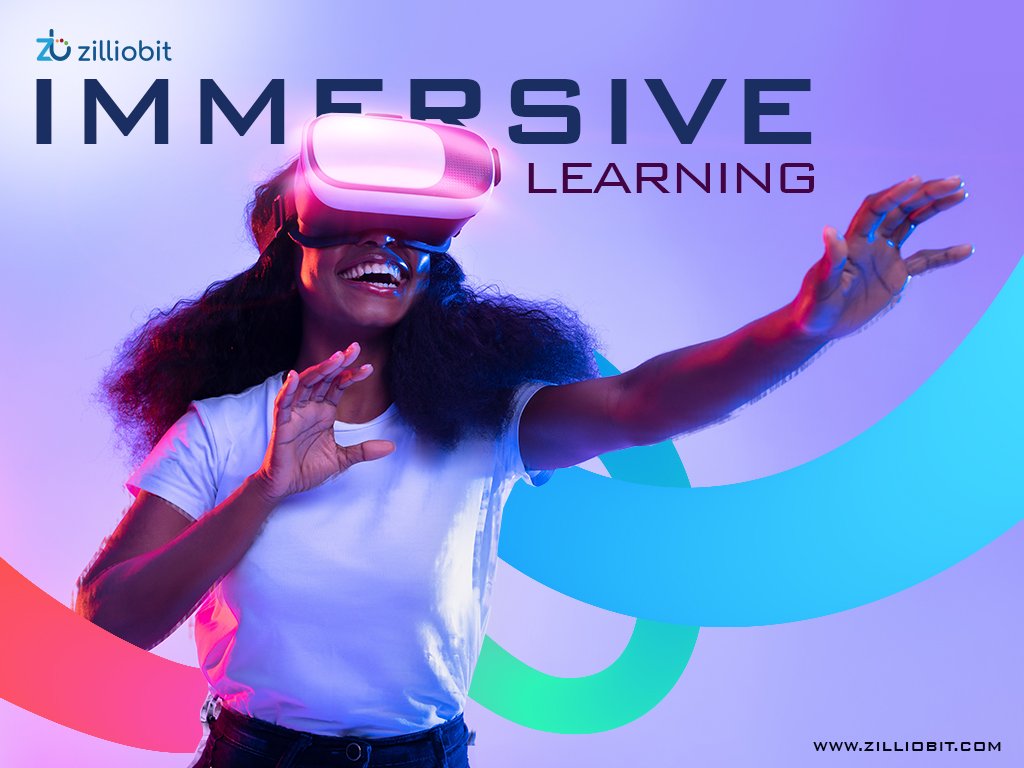Immersive Learning: Bridging Realism and Engagement in Training
7 minutes to read

Introduction
Ever wished training could be as exciting as a video game? Welcome to the world of immersive learning!Imagine stepping into a training session where you’re not just reading about procedures but actually performing them in a simulated environment. Immersive learning is transforming the landscape of learning and development (L&D), making skill acquisition more engaging and effective than ever before.
The Power of Immersive Learning
Research shows that passive learning environments do not promote excellence. Learners thrive in participatory settings that enhance both knowledge and practical skills. Immersive learning provides a safe space for learners to practice real-world skills without real-world risks, fostering a participatory setting that drives excellence.What is Immersive Learning?
Immersive learning leverages technology to stimulate multiple senses, increasing attention, evoking stronger emotions, and accurately measuring success. This approach helps learners engage deeply and develop a love for learning. It offers personalized feedback, catering to individual learning capacities and thinking processes. Immersive learning transports learners into alternative digital worlds, simulated real-life scenarios, or blends real-world settings with digital content, allowing learners to experience real-world contexts from anywhere.Why Immersive Learning?
Traditional training methods often lack engagement and practical skill application. Immersive learning, on the other hand, offers a distraction-free environment that spurs curiosity and tests practical skills in alternate digital realities. This approach treats each learner uniquely, creating an unforgettable and motivating experience.Four Pillars of Immersive Learning
The four pillars of immersive learning focus on providing a more realistic experience to learners. They can be helpful for trainers in maximizing the immersive training environment.-
Engagement
Instead of passively consuming knowledge, immersive learning requires students to actively engage in the learning process. This can support learners’ motivation and engagement throughout the learning process. As soon as you put on the headset, it will take you to a virtual world where you can see and hear everything identical to the real world. When you enter the scenario, your interaction with it will allow you to learn and improve your technical and soft skills. -
Effectiveness
One of the most critical checkpoints that immersive technologies in training cross off every learner’s list is efficiency and effectiveness. The technique successfully follows the ‘learning by doing’ philosophy. This approach allows learners to gain valuable experience, practice their skills, and develop confidence in their abilities. Immersive learning also provides learners with immediate feedback on their performance, which can help motivate them and encourage continuous improvement. -
Performance Tracking
Immersive learning can be used to measure performance in various ways. For example, it can track the effectiveness of a particular training program by monitoring participants’ progress and assessing their understanding. Additionally, immersive learning can analyze the results of simulation or project-based activities by evaluating learners’ abilities to complete tasks or solve problems in the virtual environment. -
Spatial Designs
Immersive learning spatial designs involve creating physical spaces that allow learners to engage in interactive, hands-on experiences. This environment encourages learners to move and explore, enabling them to make connections between what they are learning and the physical space. These spatial designs can simulate real-world environments, allowing learners to develop skills in problem-solving, collaboration, and creativity. Examples include maker spaces, virtual reality labs, and interactive art galleries.
Types of Immersive Learning Technology
Now that you have a grasp of what immersive learning entails, let’s delve deeper into the various types of immersive learning technologies. Here’s a concise overview:-
Virtual Reality (VR)
VR creates immersive environments that transport you to limitless digital realms without physical boundaries. Using VR-compatible devices like Meta Quest and HTC Vive, you can explore the depths of the ocean or soar through the clouds. VR gives the convincing sensation of being fully immersed in a virtual world, offering:
- Believability: You feel like you’re truly there.
- Interactivity: The VR environment reacts to your movements.
- Exploration: You can navigate through the VR world freely, virtually boundary-less.
-
Augmented Reality (AR)
AR blends virtual elements with the real world, creating an immersive experience where virtual objects interact with your physical surroundings. With AR, you can encounter virtual creatures in your living room or visualize furniture in your home before purchase. Key features of AR include:- Innovation and Creativity: Endless possibilities for interactive experiences.
- Engagement: Used in marketing and educational environments for captivating experiences.
-
Mixed Reality (MR)
MR merges aspects of both AR and VR, allowing digital content to interact with the real world. It enhances experiences by overlaying digital information onto physical environments, fostering creativity and innovation. MR enables:- Hybrid Experiences: Seamless integration of digital and physical elements.
- Enhanced Interaction: Manipulation of virtual objects in real-world contexts.
-
Gamification
Gamification transforms learning into engaging adventures by integrating game mechanics into educational content. Learners embark on journeys, solve challenges, and interact with characters to achieve learning goals. Benefits of gamification include:- Engagement: Turning education into an enjoyable experience.
- Progress Tracking: Monitoring and rewarding learner achievements.
-
Simulations
Simulations replicate real-world scenarios, offering experiential learning in safe and controlled environments. From pilot training to urban planning, simulations enable learners to practice skills and make decisions without real-world consequences. -
360-Degree Video
360-degree immersive video technology allows viewers to experience scenes from all angles, providing a heightened sense of presence. Whether watching a concert, sports event, or nature documentary, 360-degree videos immerse viewers in the action, enhancing media consumption. -
Interactive Videos
Interactive videos engage learners by allowing them to interact with content, making choices that influence the narrative or outcomes. This interactive format enhances engagement and facilitates active participation in learning experiences.
Best Practices for Immersive Learning Design
Effective learning with immersive technologies is achievable through the following best practices:-
Define Learning Objectives
Clearly establish the learning objectives before developing an immersive learning experience. This ensures the training aligns with the desired outcomes and that learners understand what is expected of them. Clear objectives help in achieving goals faster and allow for progress tracking. Note the time taken and techniques used to complete tasks to improve future projects. -
Include Interactivity
In immersive learning, leverage virtual reality (VR), augmented reality (AR), and mixed reality (MR) interactions. VR interactions can involve manipulating virtual objects, practicing skills in simulated environments, and receiving real-time feedback. AR can overlay digital information onto the real world, providing contextual learning experiences. MR blends virtual and physical elements, offering interactive and realistic training scenarios using advanced devices. These interactions enhance engagement and learning effectiveness by immersing learners in dynamic and interactive learning environments. Also utilize various learning modalities such as lectures, podcasts, videos, and interactive activities to reinforce key concepts. -
Make it Realistic
Create immersive learning experiences using natural and realistic settings. Incorporate true-to-life situations, simulations, and environments to help learners acquire the skills and knowledge needed to succeed in practical contexts. -
Accessibility
Ensure that the immersive learning experience is accessible to all learners, including those with disabilities. Make the platform compatible with assistive technologies and provide alternative formats for learners with visual or auditory impairments. -
Include Social Learning Aspects
Incorporate social learning opportunities to encourage collaboration and knowledge sharing among learners. Include forums, collaborative projects, and peer review exercises to facilitate interaction and collective learning.
Making Immersive Learning Effective
Choosing the right immersive technology is essential for achieving effective training outcomes. At Zilliobit Interactive Pvt Ltd, we specialize in providing dynamic learning solutions tailored to your needs. We analyze pain points, identify the best technologies, and deliver impactful learning outcomes.
Embrace the future of learning with immersive technology and experience the transformation in training and skill development.
Embrace the future of learning with immersive technology and experience the transformation in training and skill development.
Dive into a world where learning meets adventure with immersive learning strategies.
Let’s Talk


